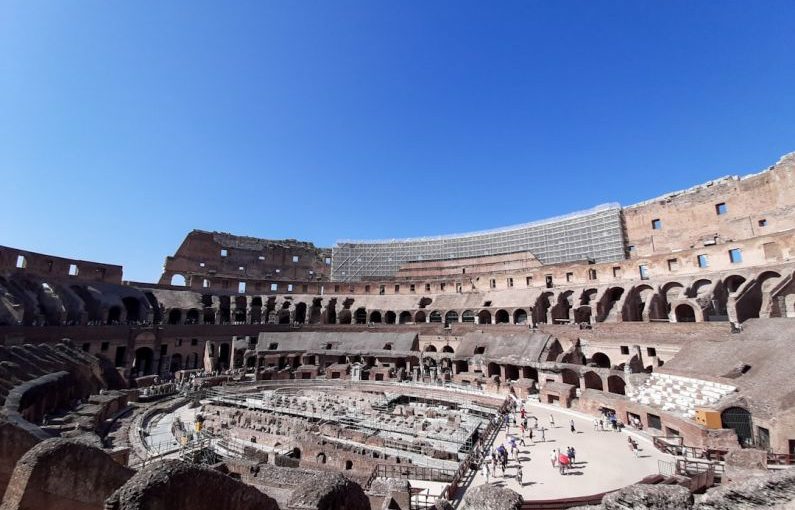Nestled in the heart of Rome, the Colosseum stands as a magnificent symbol of the ancient world. This iconic amphitheater, also known as the Flavian Amphitheatre, has captivated visitors for centuries with its grandeur and historical significance. Stepping inside its walls is like taking a step back in time, offering a glimpse into the lives of the Romans who once gathered here for entertainment and spectacle. Let’s explore the rich history and architectural marvels of the Colosseum.
The Iconic Structure
The Colosseum, a marvel of ancient engineering, was commissioned by Emperor Vespasian in AD 70 and completed by his son Titus in AD 80. This elliptical amphitheater was built using concrete and sand, with a facade of travertine limestone. Standing at over 48 meters tall and capable of seating up to 80,000 spectators, the Colosseum was the largest amphitheater of its time. Its innovative design allowed for efficient crowd control and facilitated the staging of various events, from gladiatorial contests to animal hunts.
Gladiatorial Contests
One of the most famous spectacles held at the Colosseum was the gladiatorial contests. These brutal combat displays pitted trained fighters against each other or against wild animals, providing entertainment for the Roman citizens. Gladiators, often slaves or prisoners of war, fought in elaborate battles to the death, cheered on by the roaring crowds. These events were not just about bloodshed but also served as a means of reinforcing Roman values such as courage, honor, and discipline.
Animal Hunts
In addition to gladiatorial combat, the Colosseum also hosted elaborate animal hunts known as venationes. Exotic animals from across the Roman Empire were brought to the arena to face off against skilled hunters or each other. Elephants, lions, tigers, and bears were among the creatures that thrilled the audience with their fierce battles. These hunts were a display of the Romans’ dominance over the natural world and a testament to their engineering prowess in capturing and transporting such exotic beasts.
Architectural Marvels
Beyond its historical events, the Colosseum is a masterpiece of Roman architecture. The amphitheater’s design incorporated advanced engineering techniques that allowed for efficient crowd circulation and rapid entry and exit. A system of ramps, stairways, and corridors guided spectators to their seats based on social status, ensuring a smooth flow of people during events. The elaborate network of underground tunnels and chambers housed gladiators, animals, and equipment, providing a seamless backdrop for the grand spectacles above.
Preservation Efforts
Despite being subjected to centuries of neglect, vandalism, and natural disasters, the Colosseum still stands as a testament to the ingenuity of ancient Roman builders. Over the years, various restoration projects have been undertaken to preserve this iconic structure for future generations. Today, visitors can explore the Colosseum’s interior, marvel at its towering arches, and imagine the roar of the crowds that once filled its seats.
The Legacy of the Colosseum
The Colosseum’s legacy extends far beyond its physical walls. It represents the power, grandeur, and cultural achievements of ancient Rome, serving as a reminder of the city’s glorious past. The amphitheater’s enduring popularity as a tourist attraction underscores its timeless appeal and significance in the modern world. By visiting the Colosseum, we not only pay homage to the Romans who built it but also gain a deeper appreciation for the rich history and heritage of this remarkable civilization.
In conclusion, the Colosseum stands as a living testament to the grandeur and cultural significance of ancient Rome. Its iconic structure, historical events, and architectural marvels continue to captivate visitors from around the world, offering a unique glimpse into a bygone era. As we walk in the footsteps of the Romans who once gathered here, we are reminded of the enduring legacy of this ancient amphitheater and the civilization that created it.





